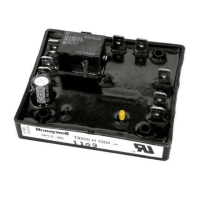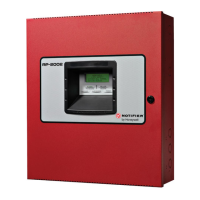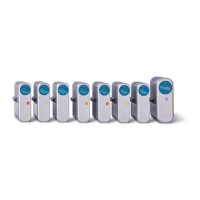4. B.
(6) (e) VLF/Omega Only
The current Phase II certification allows GPS data to be viewed
on the CDU, however the navigation computer does not use GPS
data in determining its position.
The -976 Navigation Computer (9101 software level) can use GPS
position information blended with other sensors in deriving the
FMS
position.
GPS data may also
be viewed on the CDU. The GPS
information can come directly from the GPS sensors or through
hybrid IRS/GPS
(GPIRS) units to the FMS. Regardless of how the
~~~ information gets to the FMS, it is treated the same by the
The GPIRS units provide three sets of data (pure IRS,
hyb~id IRS/GPS, pure GPS) to the FMS. The FFISuses the pure
IRS data just as IRS has been used in the past. The FMS uses
the
hybrid IRS/GPS or purse GPS as the GPS sensor information.
By priority, the FMS uses the hybrid IRS/GPS information if
available and pure GPS only if the hybrid is not available.
With GPS position blending o erational, the FMS
computes an
aircraft
reference position
Eased on the best available
sensors
excluding GPS.
The reference position is compared to GPS
position.
If the positions agree within predefine tolerances,
GPS position is blended with the reference position to form the
FMS position.
GPS data is not blended
if it fails the position
comparison.
Tolerances for com
aring the reference and GPS positions were
I
established with t e FAA.
The tolerances for NZ-9101 software
are: 18.0 nautical miles (NMI) oceanic, 4.3 NMI
enroute, 2.6
NMI terminal area, and 0.4 NMIon approach (increased to 0.7
NMIwhen using VOR/DME updating).
When the FMS is in radio updating (VOR/DME or DME/DME), the
average GPS and radio positions are equally weighted in
deriving the FMS position. Thus, in radio updating, the FMS
position could deviate a maximum 1/2 the above listed
tolerances due to GPS.
When GPS is blended with other long-range navigation (LRN)
sensors, each GPS and IRS contribute an equal share to the FMS
position.
In the case of VLF/Omega, the avera e VLF/Omega
i
position is counted equal to a single GPS or I S sensor.
For
example, two
T
ure
IRS position inputs blended with a single GPS
position resu ts in an FMS position deviation due to GPS is
one-third of the above listed tolerances.
With three IRSS and
two GPS sensors, and no other position information, the average
GPS position would account for 40 percent of the resulting FMS
position.
GPS is certified for supplement navigation only. This means
that it cannot be used as the sole source of osition. There
must be other means of determining osition,
7
Iowever, where all
other sensors are deselected or fai ed, the FMS can navigate
with GPS as the only position sensor. In this situation, DGRAD
is illuminated and NO REQUIRED SENSORS is displayed on the
control display unit indicating the FMS cannot guarantee the
required accuracy for the present phase of flight.
22-14-00
Page 298.165
Apr 15/93
Use or disclosure of information on this page is subject to the restrictions on the title page of this document.

